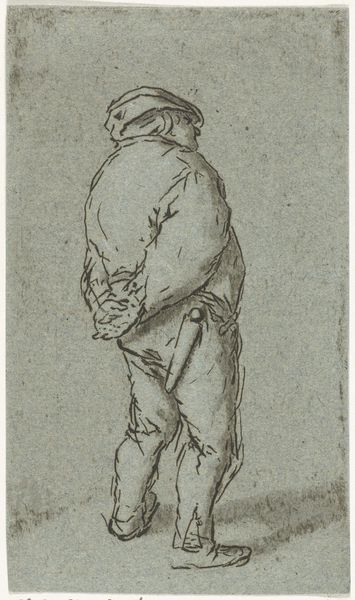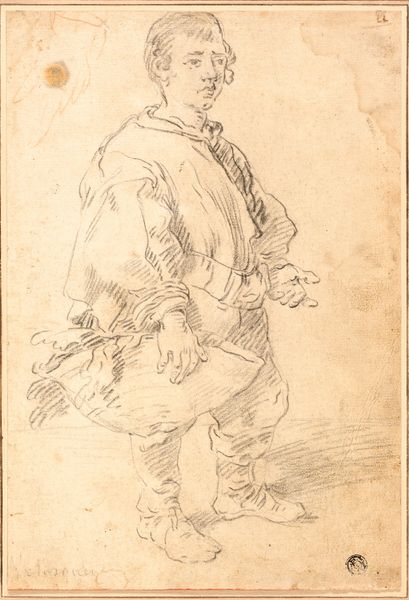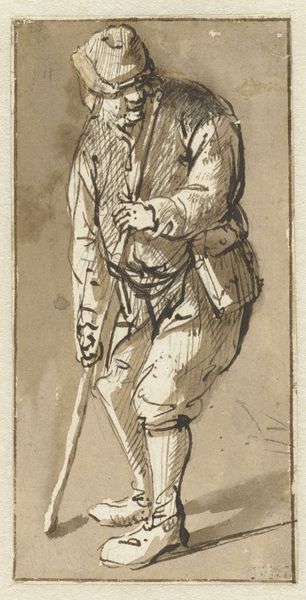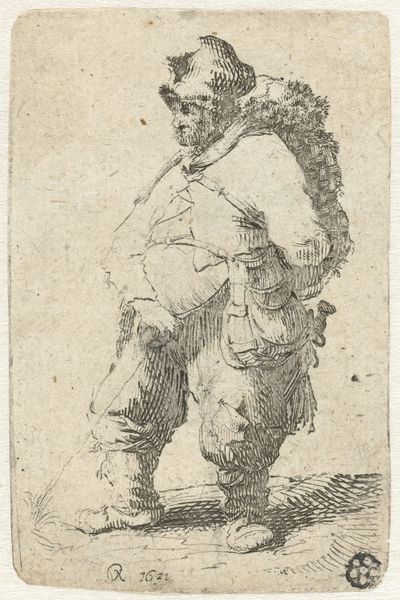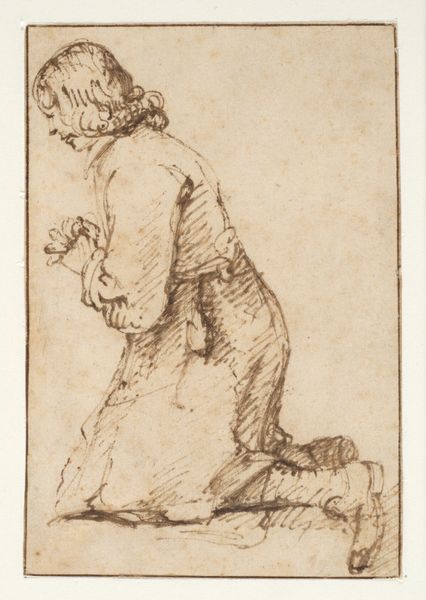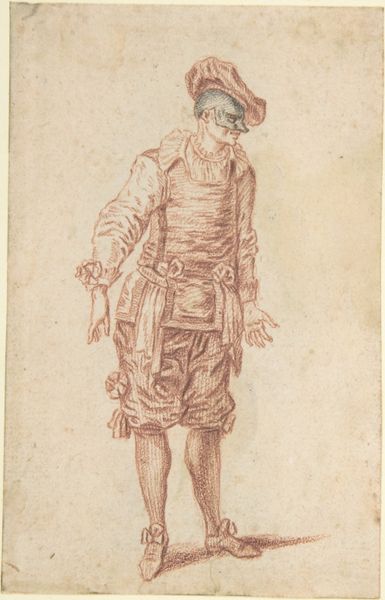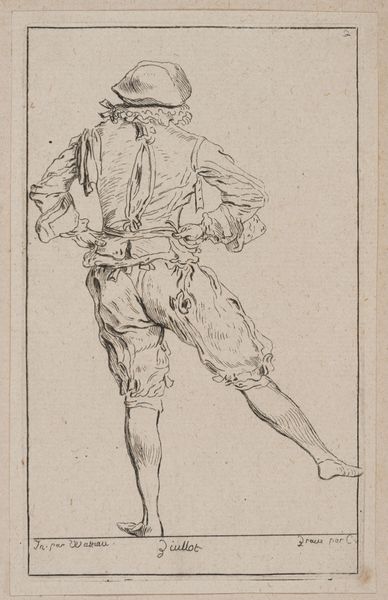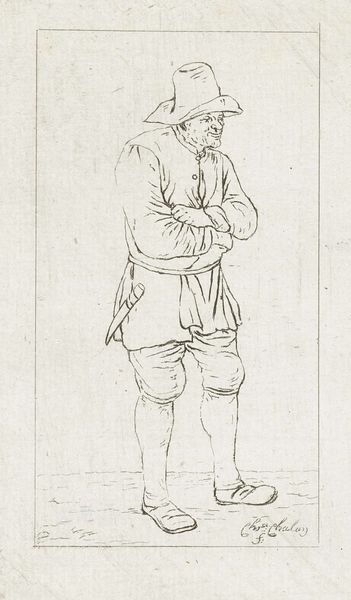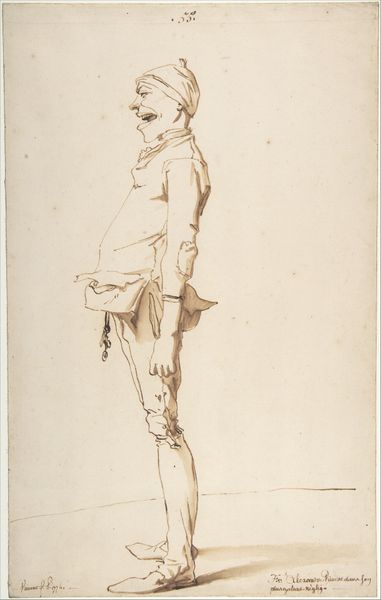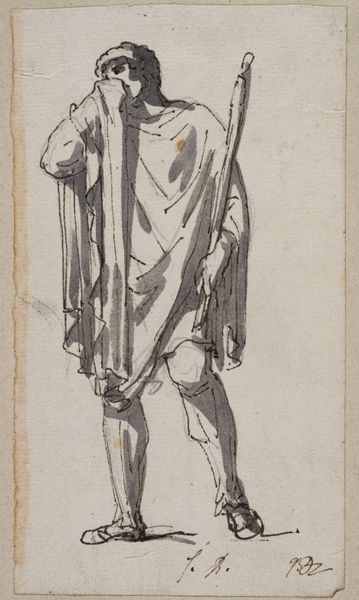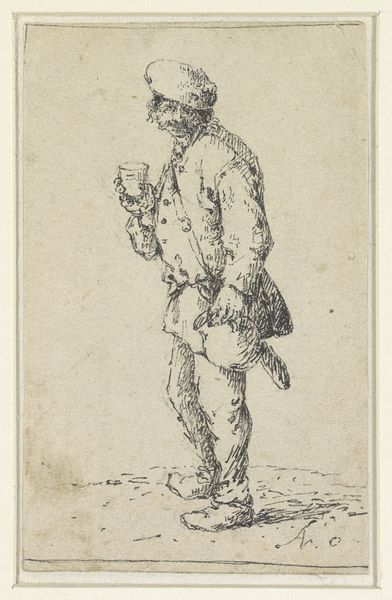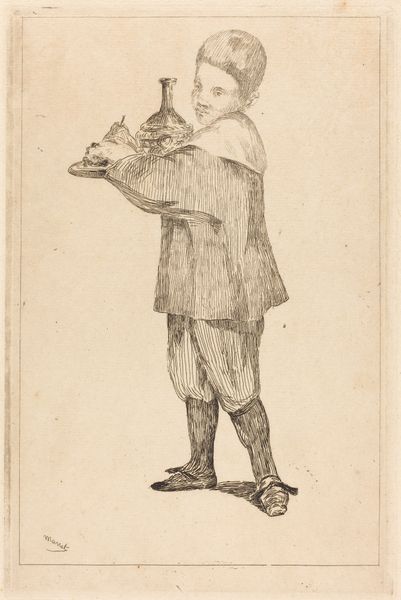
drawing, paper, ink
#
portrait
#
drawing
#
neoclacissism
#
figuration
#
paper
#
ink
Dimensions: height 138 mm, width 79 mm
Copyright: Rijks Museum: Open Domain
Cornelis van Noorde created this etching of a standing man in the Netherlands in the 18th century. The image shows a man with his back turned, hands clasped behind him, and a knife hanging from his belt. What does this tell us about the social context in which it was made? The Dutch Republic in the 1700s was a society with a growing divide between rich and poor. The Golden Age had passed, and the Dutch struggled to maintain their economic power. We see the rise of a middle class, and with it a new kind of art market. Artists like van Noorde were producing smaller, more affordable works for this audience. This etching invites us to consider the world of the common man in the 18th century. To fully understand it, one might research the fashion of the time, or delve into the social history of the Dutch working class. Art offers a glimpse into the past, but it's the work of historians that truly brings it to life.
Comments
No comments
Be the first to comment and join the conversation on the ultimate creative platform.
